iPhone 6 and iPhone 6 Plus: Preliminary Results
by Joshua Ho on September 22, 2014 7:07 AM EST- Posted in
- Smartphones
- Apple
- Mobile
- iOS
- iPhone 6
- iPhone 6 Plus
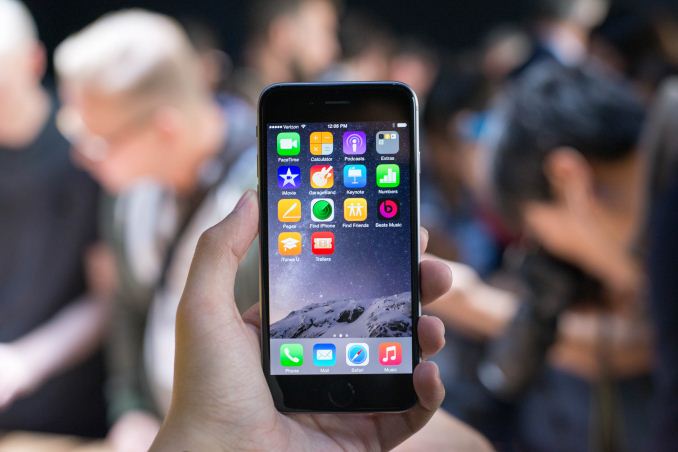
While we’re still working on the full review, I want to get out some preliminary results for the iPhone 6. For now, this means some basic performance data and battery life, which include browser benchmarks, game-type benchmarks, and our standard web browsing battery life test. There’s definitely a lot more to talk about for this phone, but this should give an idea of what to expect in the full review. To start, we'll look at the browser benchmarks, which can serve as a relatively useful proxy for CPU performance.
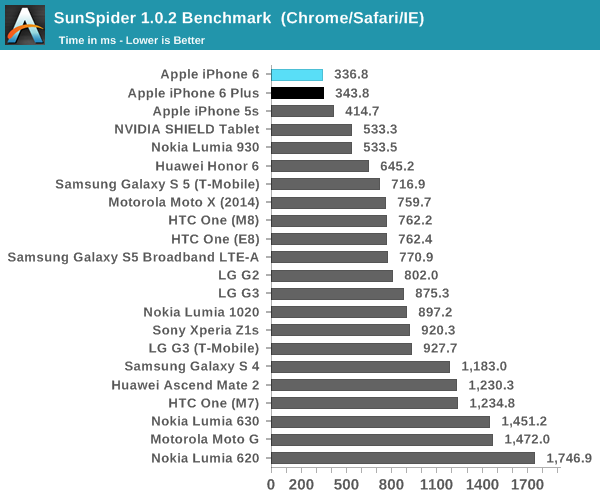
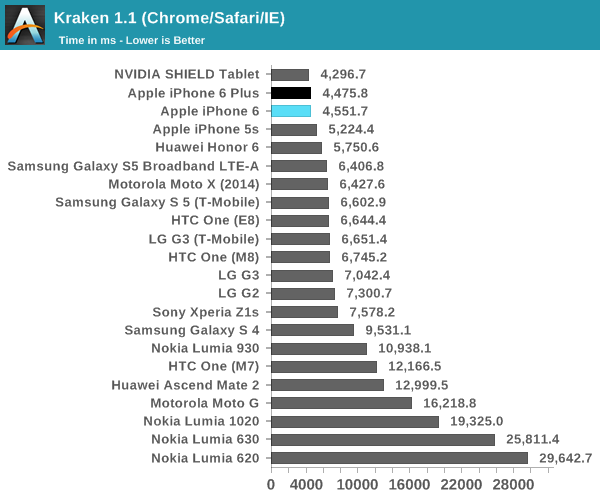
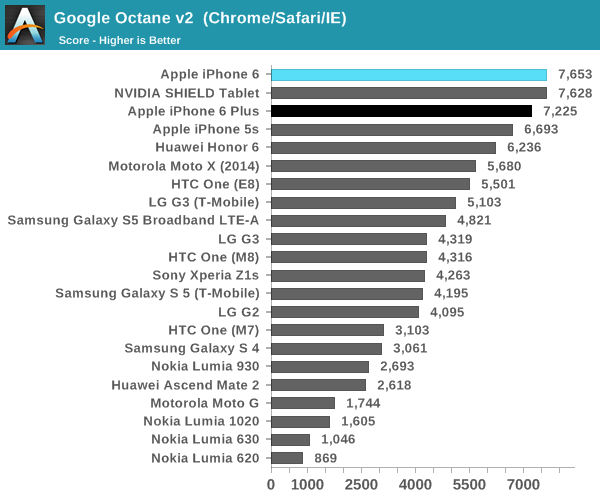
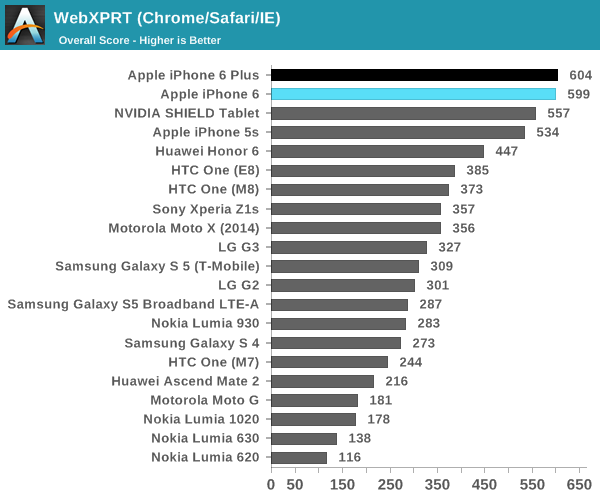
There are a few interesting observations here, as a great deal of the scaling is above what one would expect from the minor frequency bump when comparing A7 and A8. In SunSpider, we see about a 13% increase in performance that can't be explained by frequency increases alone. For Kraken, this change is around 7.5%, and we see a similar trend across the board for the rest of these tests. This points towards a relatively similar underlying architecture, although it's still too early to tell how much changes between the A7 and A8 CPU architectures. Next, we'll look at GPU performance in 3DMark and GFXBench, although we're still working on figuring out the exact GPU in A8.
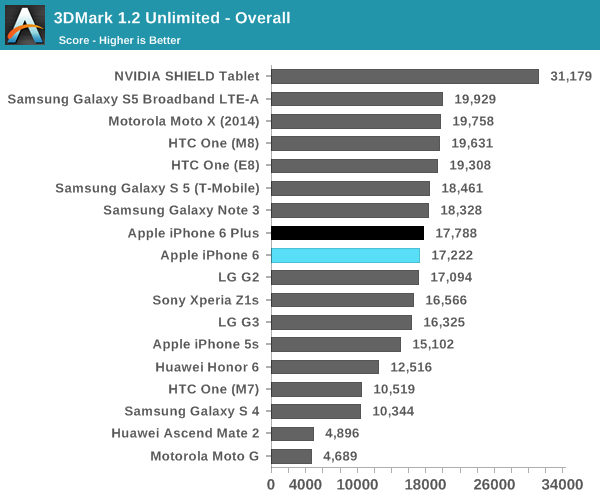
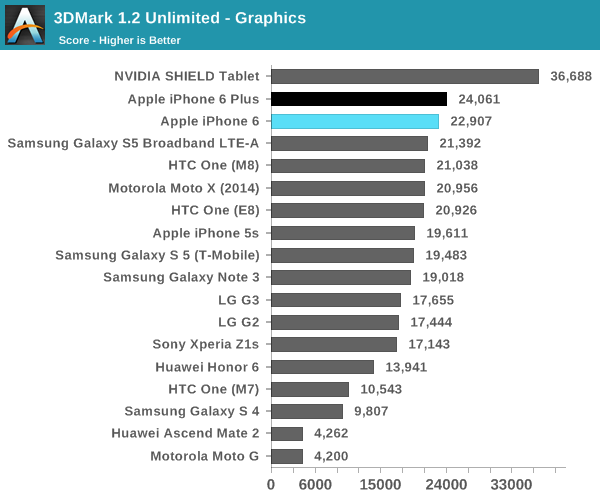
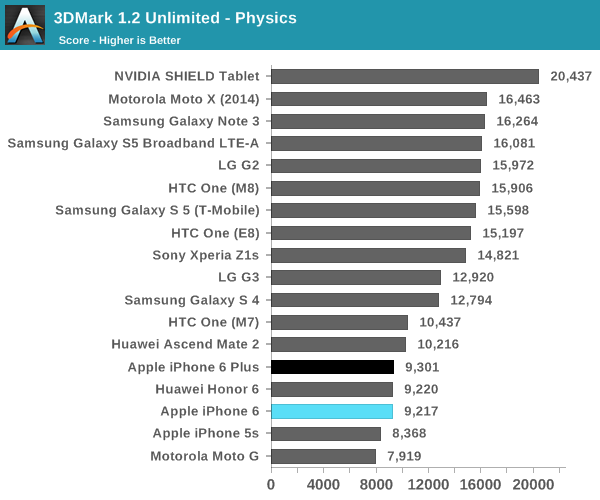
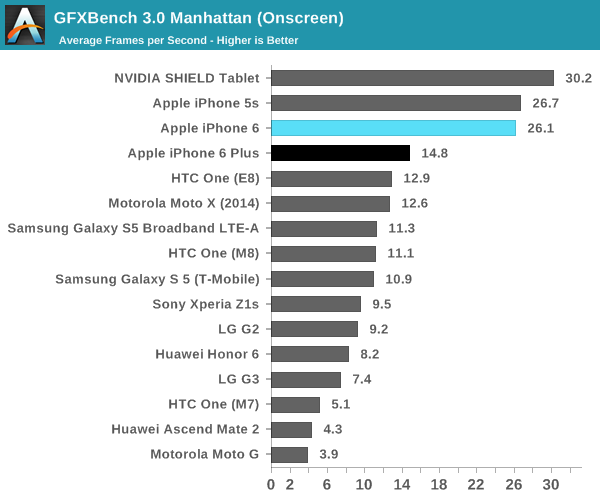
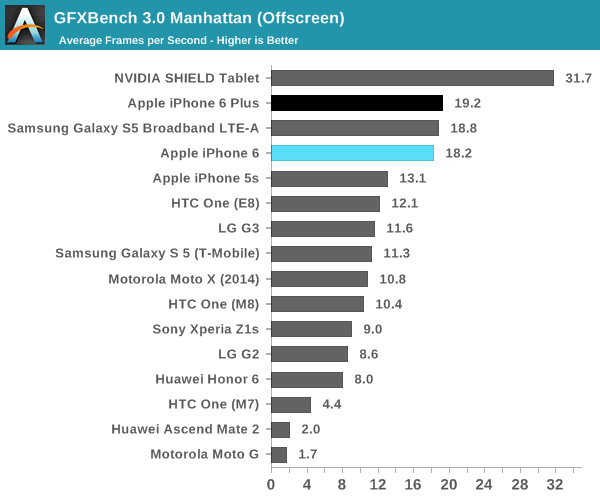
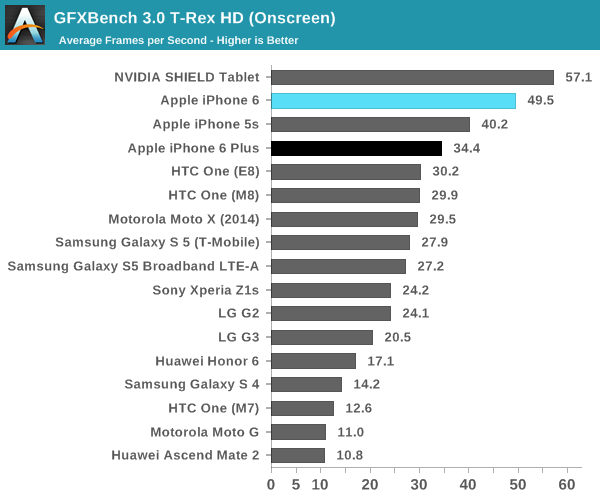
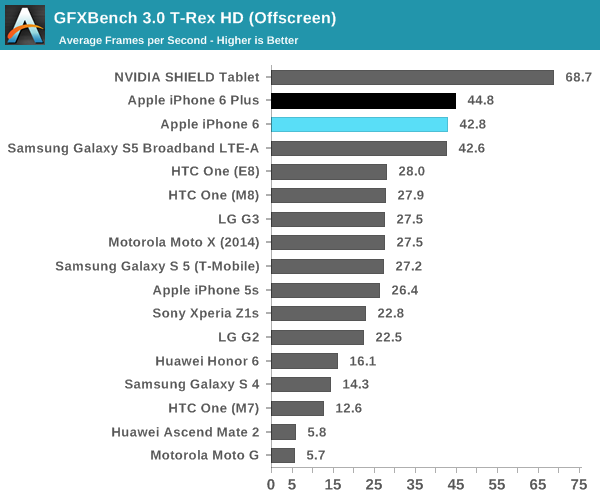
In in GPU benchmarks, we generally see a pretty solid lead over the competition for the iPhone 6/A8. It's seems quite clear that there is a significant impact to GPU performance in the iPhone 6 Plus due to the 2208x1242 resolution that all content is rendered at. It seems that this is necessary though, as the rendering system for iOS cannot easily adapt to arbitrary resolutions and display sizes. Before we wrap up this article though, I definitely need to address battery life. As with all of our battery life tests, we standardize on 200 nits and ensure that our workload in the web browsing test has a reasonable amount of time in all power states of an SoC.

As one can see, it seems that Apple has managed to do something quite incredible with battery life. Normally an 1810 mAh battery with 3.82V nominal voltage would be quite a poor performer, but the iPhone 6 is a step above just about every other Android smartphone on the market. The iPhone 6 Plus also has a strong showing, although not quite delivering outrageous levels of battery life the way the Ascend Mate 2 does. That's it for now, but the full review should be coming in the near future.










316 Comments
View All Comments
hanse - Monday, September 22, 2014 - link
The Bluetooth antenna in the iPhones are usually weak - Will you be testing that?steven75 - Monday, September 22, 2014 - link
[citation needed]darwiniandude - Monday, September 22, 2014 - link
I have my 5s by my bed. It plays fine to a bluetooth speaker in the bathroom while also connected to and being controlled from my Pebble over Bluetooth from the shower. This feels like a really long way away, I'm always surprised but it works. I also annoy my wife by playing my podcasts at her to the bluetooth in her car from my car when we're both driving in traffic together.I don't have much frame of reference for comparison, but I've been mightily impressed with Bluetooth range.
apunari - Monday, September 22, 2014 - link
How can a dual core cpu and 1gb ram device be as good or better than a 8core cpu and 3gb ram phone?shrim - Monday, September 22, 2014 - link
Samsung is great at marketing their phones through specs, not so great on choosing hardware that actually gives superior performance. Also, consider that iOS is optimized and designed specifically for the hardware used in the iPhone.Kureno - Monday, September 22, 2014 - link
Better optimized.Also: android runs app in dalvik, dalvik is a virtual machine and dalvik is based on java and java is slow and a resource eater.
widL - Monday, September 22, 2014 - link
It has to do both with hardware and software. On the hardware side, the thermal headroom and maximum power consumption is very limited in a phone. It also has to do with the CPU architecture.On the software side - Android simply is slower, and multi-core programming is very difficult, and in many cases theoretically impossible (not all problems can be parallelized).
That was just some of the reasons, explained very briefly.
DanNeely - Monday, September 22, 2014 - link
Very little non-graphics/scientific software scales well to many cores. The iPhone's poor showing in the physics benches is probably due to that test being able to scale to the extra cores common on most Android devices. Extra memory only matters for heavy multi-tasking. I suspect a test that loaded switched between enough browser tabs that the iPhone and budget android phones were forced to unload/reload due to memory pressure but android flagships weren't would generate very different results.uhuznaa - Monday, September 22, 2014 - link
That's like asking "How can a 4 cylinder engine be better than a 6 cylinder engine?"The count of cores has very little to do with how a SoC performs. Also note that this is NOT as in the Intel days when everybody just bought the very same chips. Apple's SoCs are utterly different from what others come up with and Apple is one of the very few companies that not only license ready ARM designs but have an actual license to design their own cores (and whatever goes between them).
DeciusStrabo - Monday, September 22, 2014 - link
Regardless if you produce 400 hp with 6 cylinders or with 8 cylinders - you still have 400 hp.